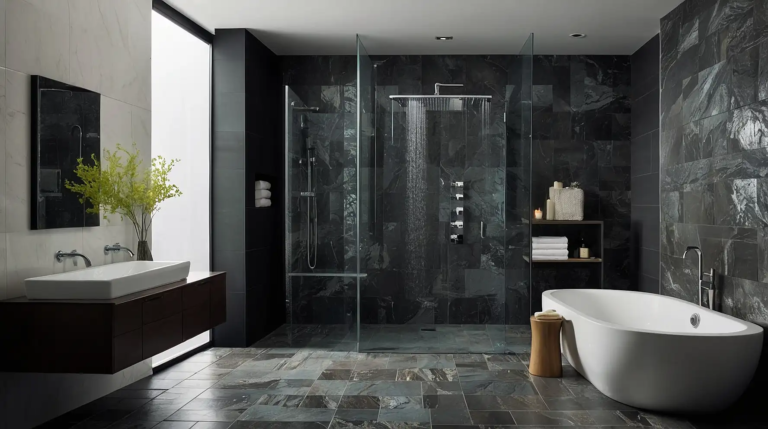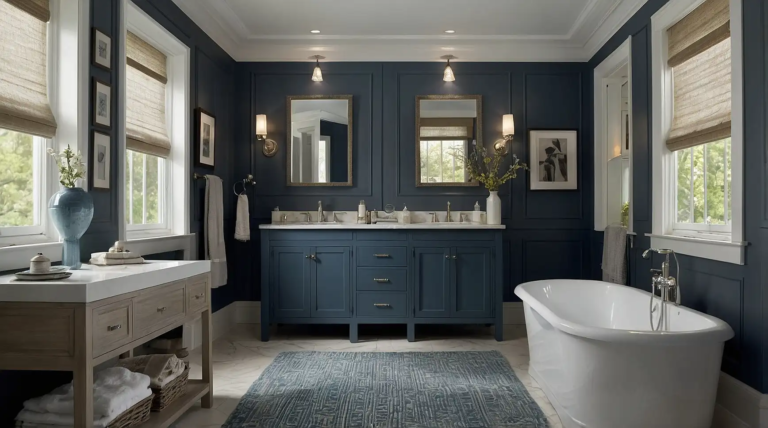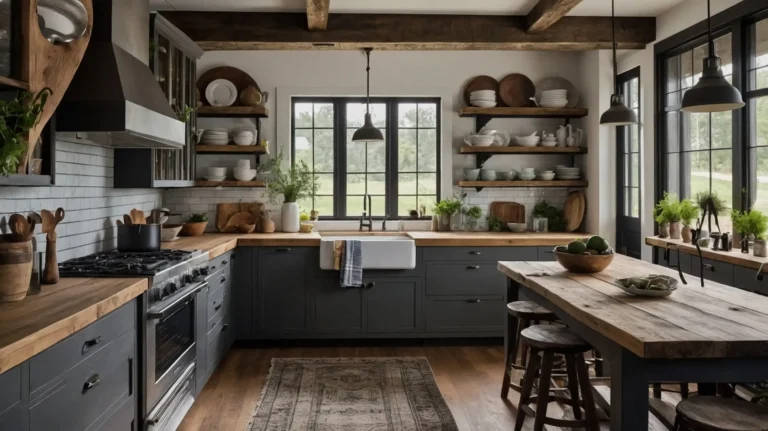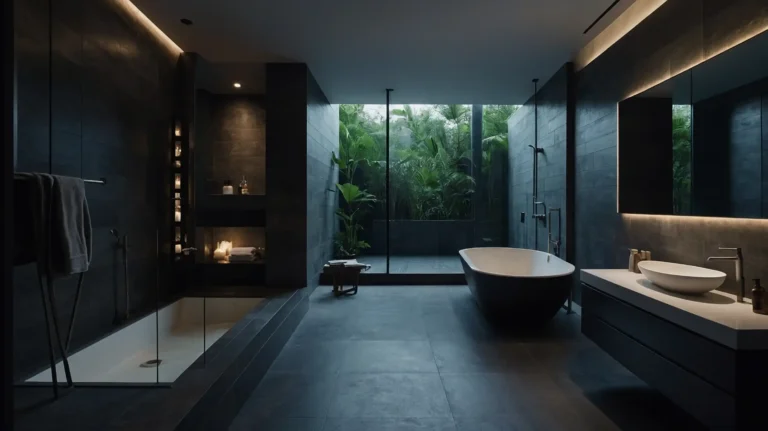21 Simple Yet Stunning Canvas Painting Ideas That Even Beginners Can Master
You don’t need years of art school to create beautiful canvas paintings. With a few basic supplies and some simple techniques, you can create impressive artwork for your home.
These beginner-friendly painting ideas will help you overcome the intimidation of a blank canvas and build your confidence with each brushstroke.
Grab your paints and let your creativity flow with these accessible projects that deliver impressive results—even on your first try!
1: Abstract Color Blocks
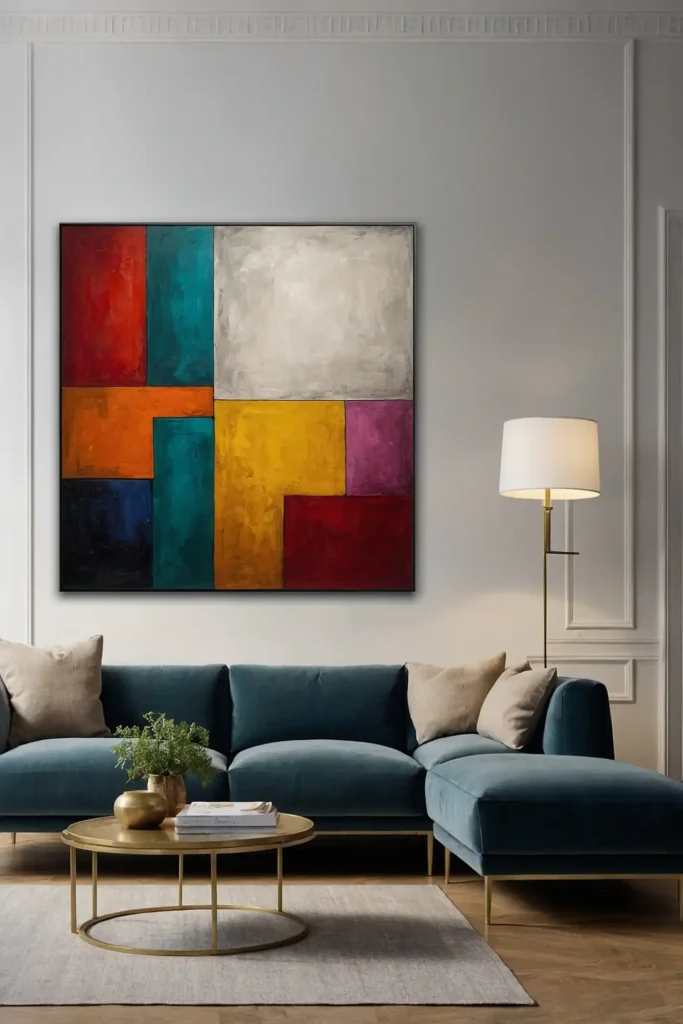
Create a modern art piece by dividing your canvas into sections with painter’s tape and filling each block with different colors.
Remove the tape when dry for crisp, clean lines.
This foolproof technique allows you to play with color combinations without worrying about intricate details.
Try complementary colors for vibrant energy or monochromatic shades for a sophisticated look.
2: Ombré Sunset Silhouettes
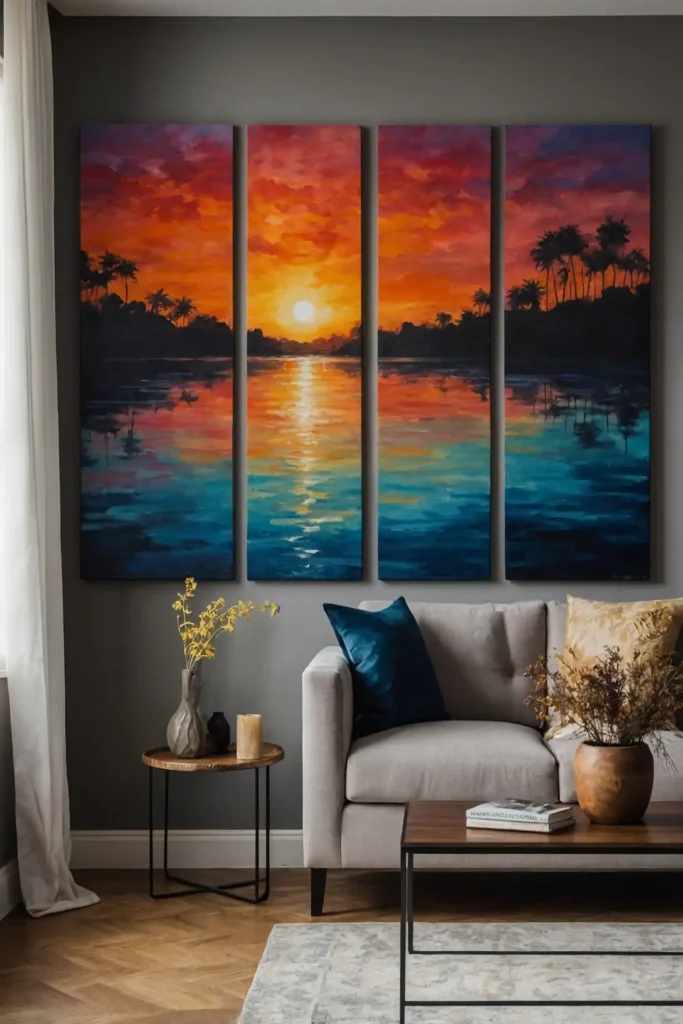
Paint a gradient background from yellow to orange to deep red, mimicking a sunset sky.
Once dry, add black silhouettes of trees, mountains, or city skylines along the bottom edge.
The stark contrast between the colorful background and dark silhouettes creates dramatic impact.
This technique teaches basic gradient blending while delivering professional-looking results.
3: Minimalist Mountain Landscapes
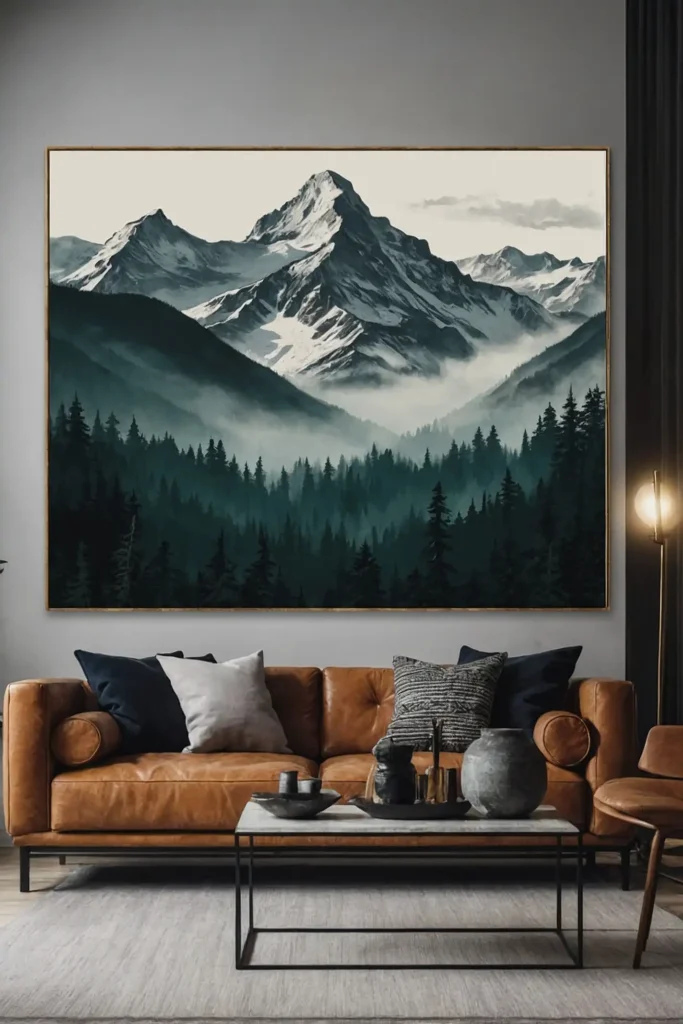
Create a serene mountain scene using simple triangular shapes in various shades of blue and gray.
Add a thin line of white at the peak for snow and perhaps a small cabin at the base.
This geometric approach requires no advanced drawing skills.
The clean lines and limited color palette result in a modern, Scandinavian-inspired piece perfect for contemporary spaces.
4: Textured Finger Painting
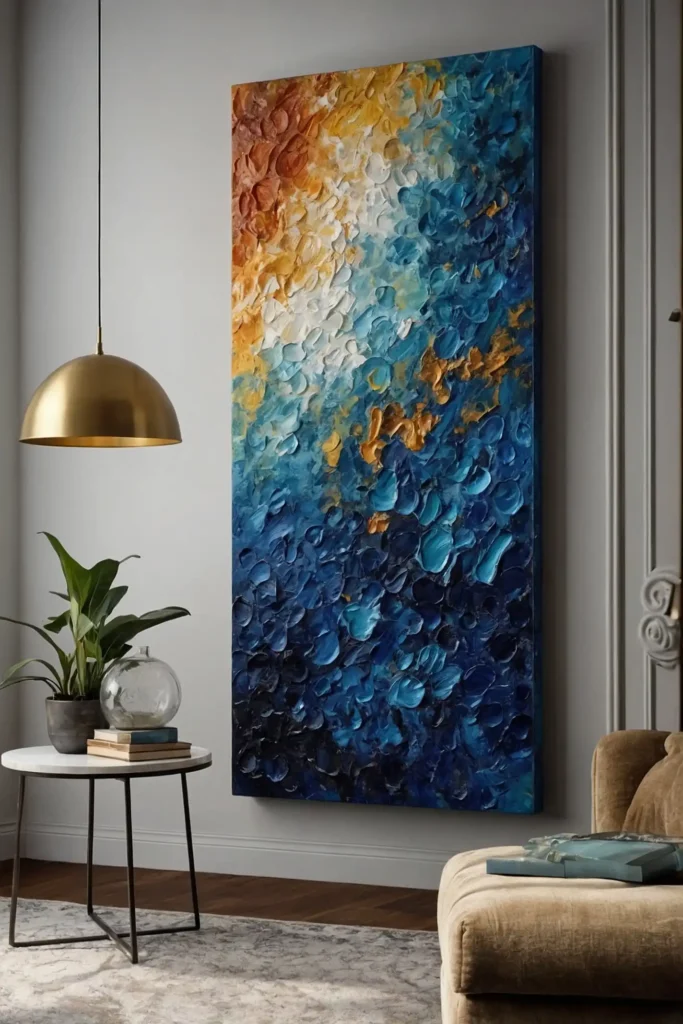
Embrace your inner child with grown-up finger painting.
Apply thick acrylic paint directly with your fingers to create textured, abstract designs with swirls, dots, and lines.
This tactile approach frees you from the precision of brushwork.
The resulting texture adds dimension and interest that can’t be achieved with brushes alone.
5: Galaxy Night Sky
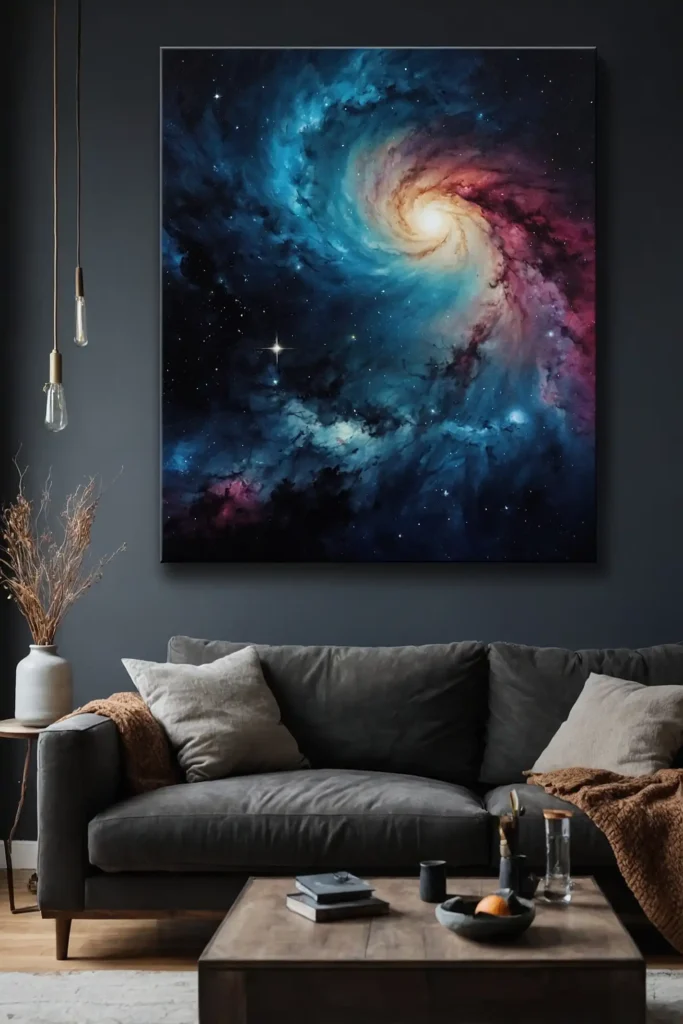
Create cosmic scenes by blending dark blues, purples, and blacks for the background.
Add stars by flicking white paint from a toothbrush, then use a small brush for larger stars and planets.
This forgiving technique allows for beautiful mistakes—there’s no “wrong way” to create a galaxy.
The splatter method creates realistic star clusters with minimal effort.
6: Stenciled Geometric Patterns
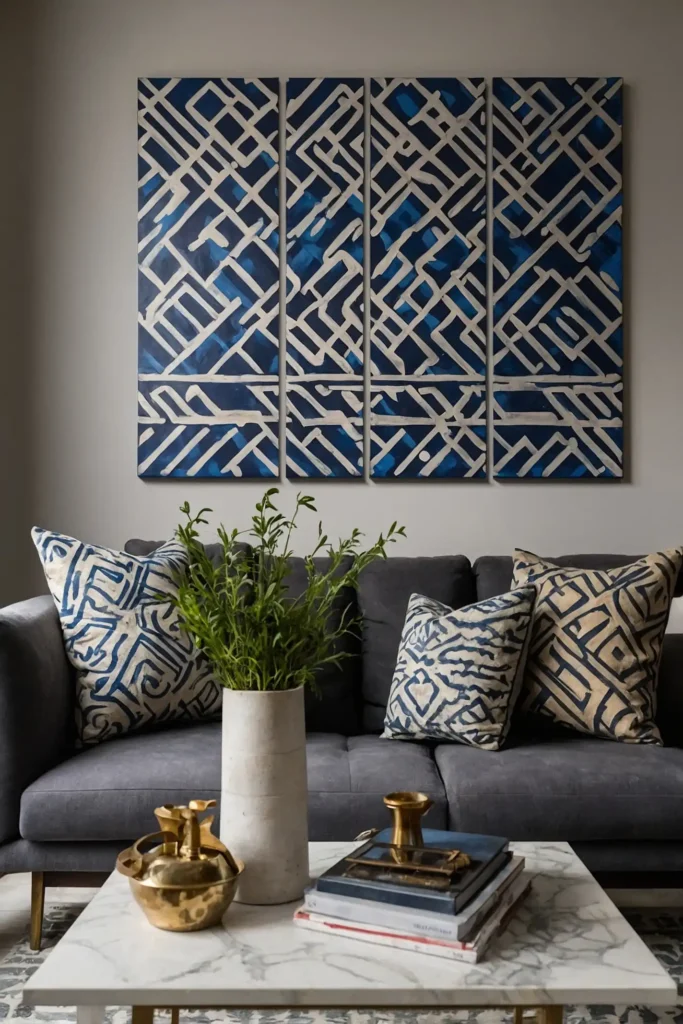
Use store-bought or homemade stencils to create precise geometric patterns on your canvas.
Apply paint with a sponge dabber for clean edges without bleeding.
This method guarantees professional-looking results even for those with unsteady hands.
Create repeating patterns or a single large design for different effects.
7: Inspirational Word Art
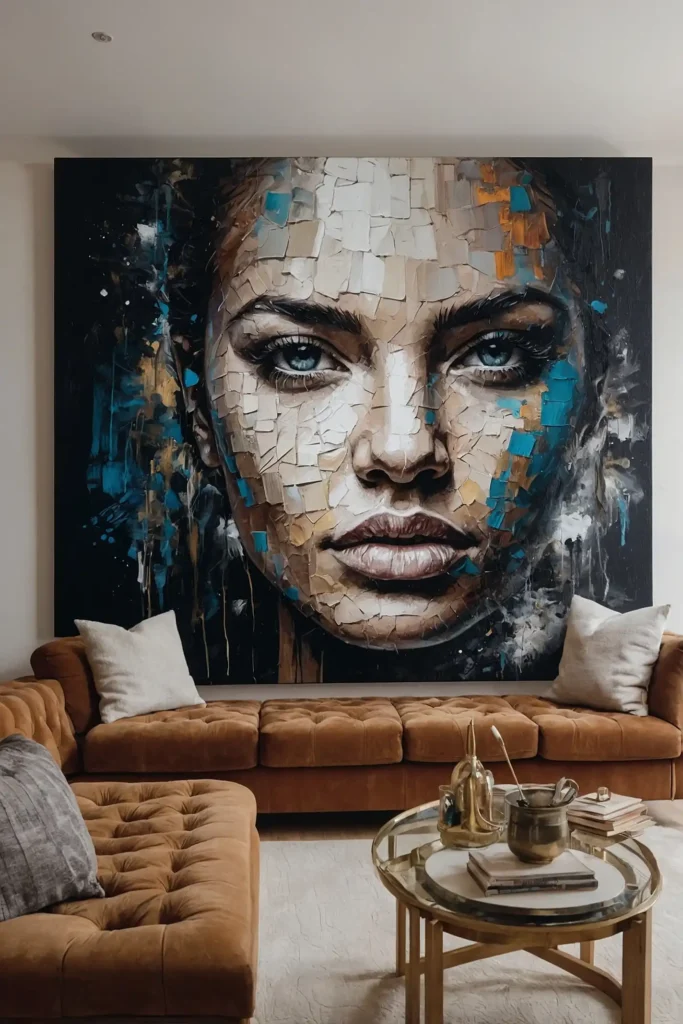
Choose a meaningful word or short phrase and paint it in bold lettering across your canvas.
Use a pencil to sketch the letters first, then fill them in with your favorite colors.
Personalize with decorative flourishes or a watercolor background.
This project combines typography with painting for a piece that’s both decorative and meaningful.
8: Pour Painting Marble Effect
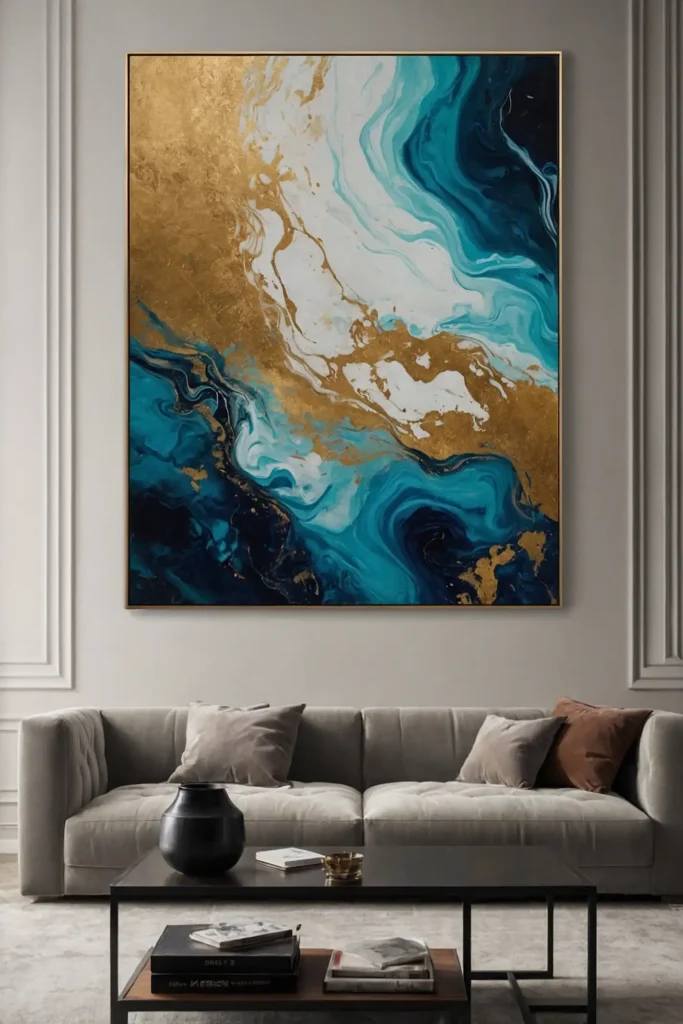
Create mesmerizing marbled designs by mixing acrylic paints with pouring medium and silicone oil, then pouring them onto canvas and tilting to blend colors organically.
This technique creates hypnotic patterns that form naturally as the paints interact.
Each piece becomes a unique, unrepeatable abstract artwork with minimal technical skill required.
9: Masking Tape Cityscape
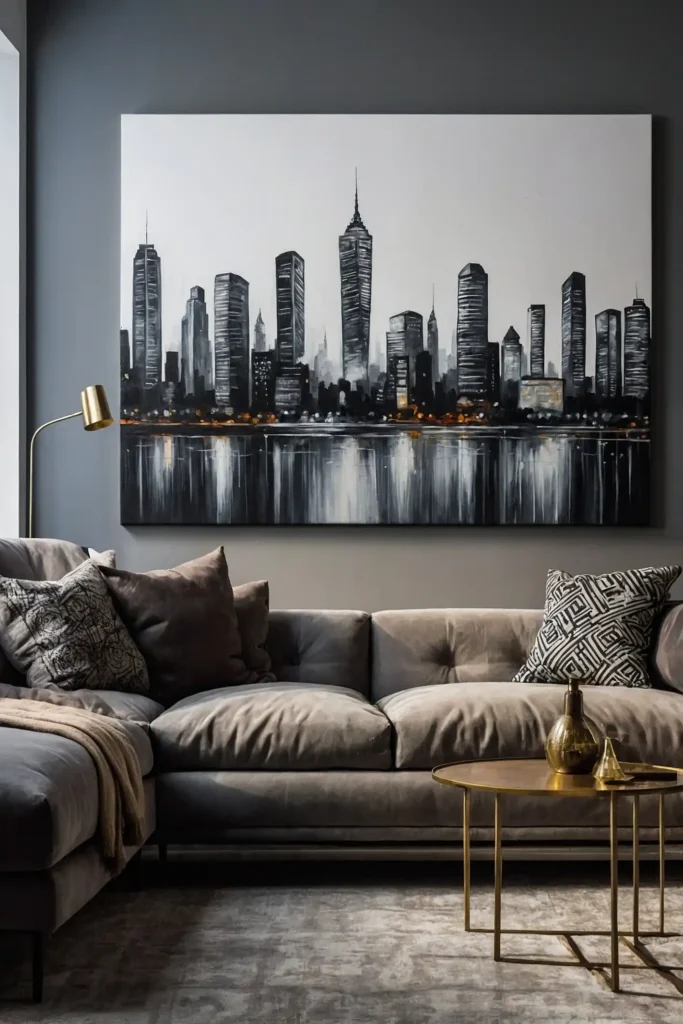
Use strips of masking tape to block out a cityscape silhouette.
Paint over the entire canvas with blues and purples, then remove the tape to reveal white or colored buildings.
This negative space technique creates crisp architectural lines without requiring drawing skills.
Vary building heights and widths for a realistic metropolitan skyline.
10: Simple Floral Impressions
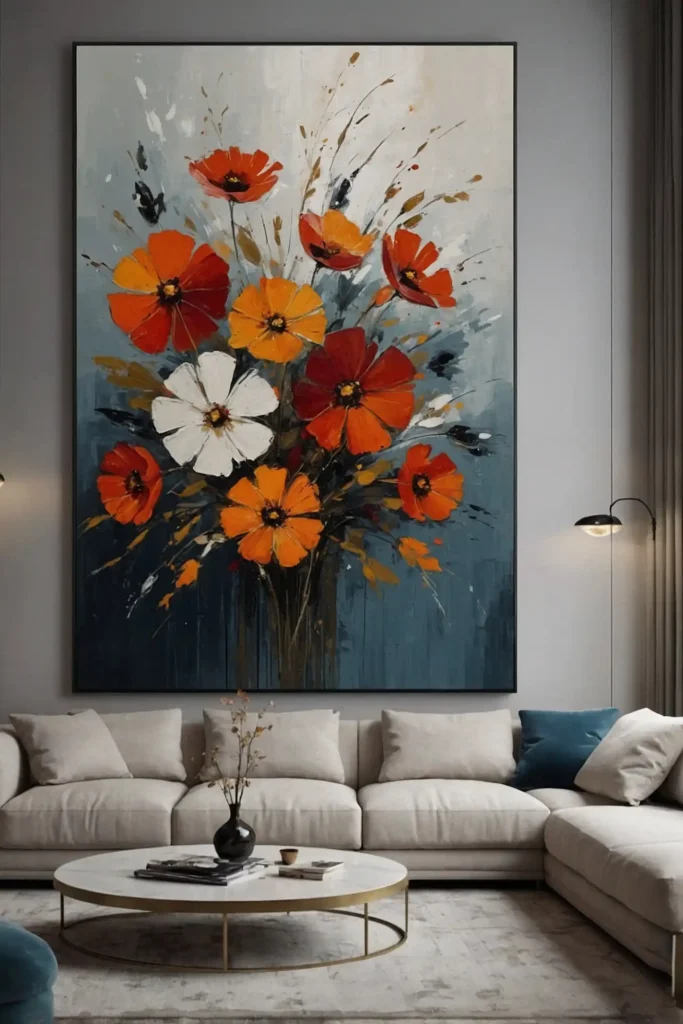
Create impressionistic flowers using simple dabs and strokes with a round brush.
Focus on color and shape rather than detail, using reds, yellows, and purples for the blooms.
Add green stems with quick strokes and dots for leaves.
This loose, interpretation of flowers teaches basic brush control while producing cheerful, garden-inspired art.
11: Monochromatic Tree Silhouettes
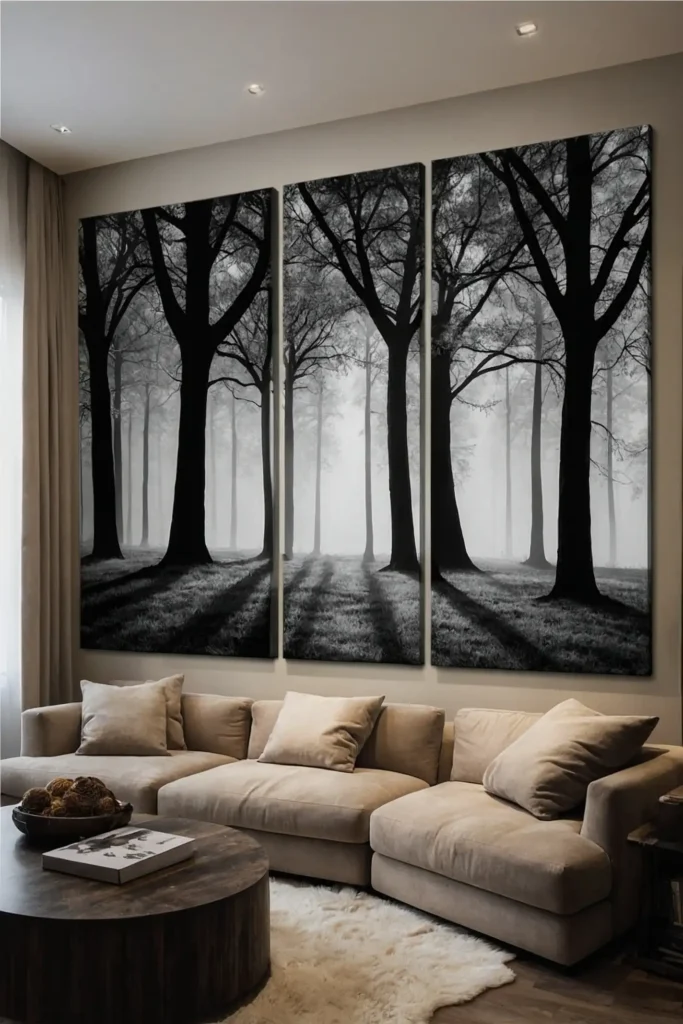
Paint a simple background in a single color with varying intensity.
Once dry, add tree silhouettes in black using a flat brush for the trunks and a dabbing motion for leaves.
This project teaches value (lightness and darkness) within a single color family.
The stark contrast between background and silhouettes creates dramatic visual impact.
12: Geometric Animal Shapes
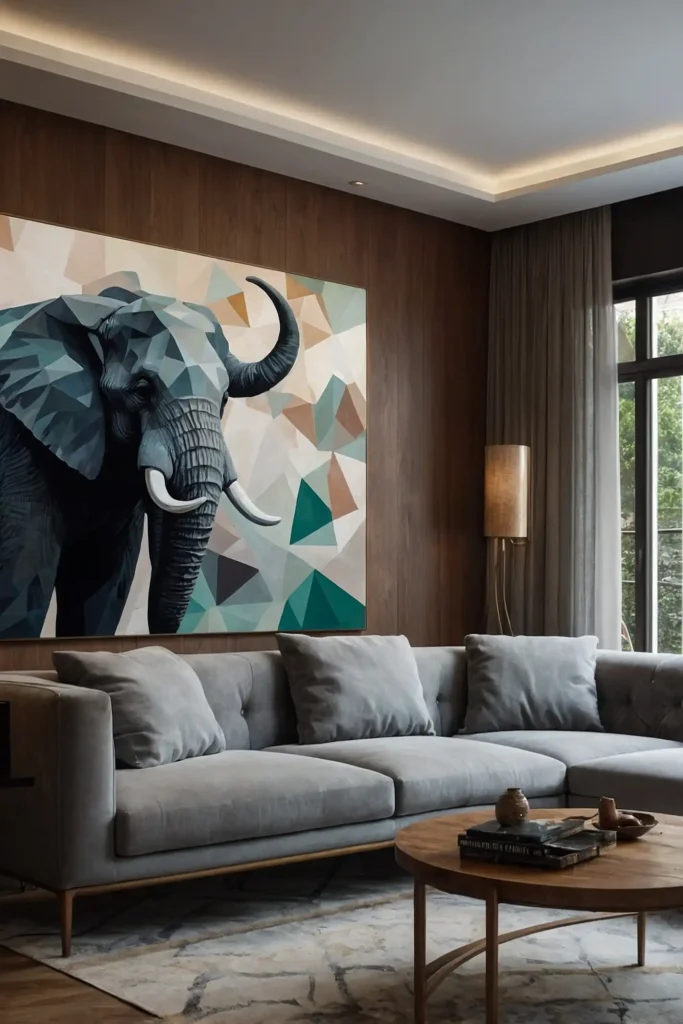
Create modern animal art using only triangles, circles, and squares.
Sketch the basic shape of your chosen animal, then fill it in with geometric sections in coordinating colors.
This abstract approach removes the pressure of realistic animal depiction.
The resulting geometric interpretation brings a contemporary, graphic design feel to your art.
13: Tape-Resist Chevron Pattern
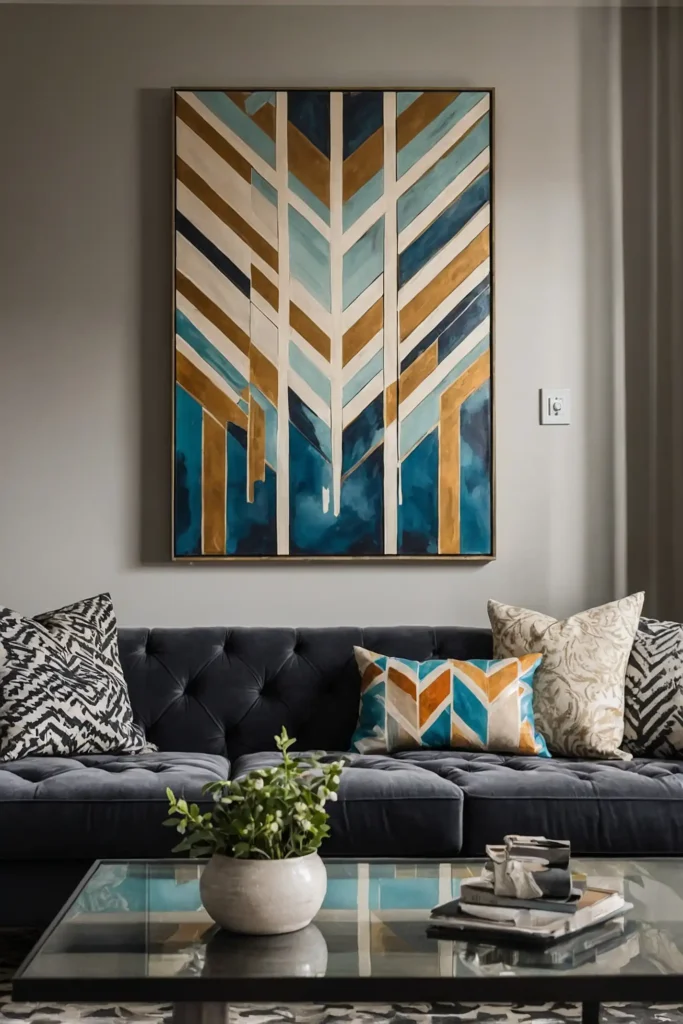
Create perfect chevron patterns by applying masking tape in zigzag formations across your canvas.
Paint over with your chosen colors, then remove the tape to reveal clean lines.
This technique guarantees crisp, professional-looking patterns without freehand precision. Try multiple colors or a gradient effect for added visual interest.
14: Simple Seascape Horizon
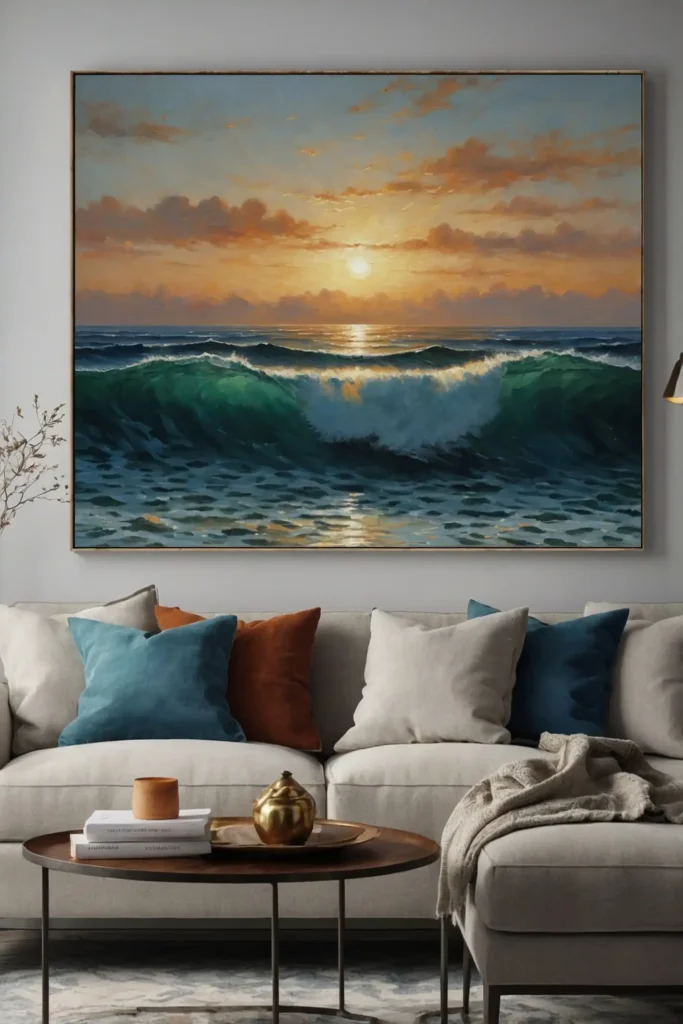
Divide your canvas horizontally and paint the lower portion blue for ocean and the upper portion a lighter blue for sky.
Blend where they meet for a soft horizon line.
Add white caps to waves with a dry brush technique.
This simple composition teaches basic perspective and horizon placement while creating a calming coastal scene.
15: Dandelion Silhouettes
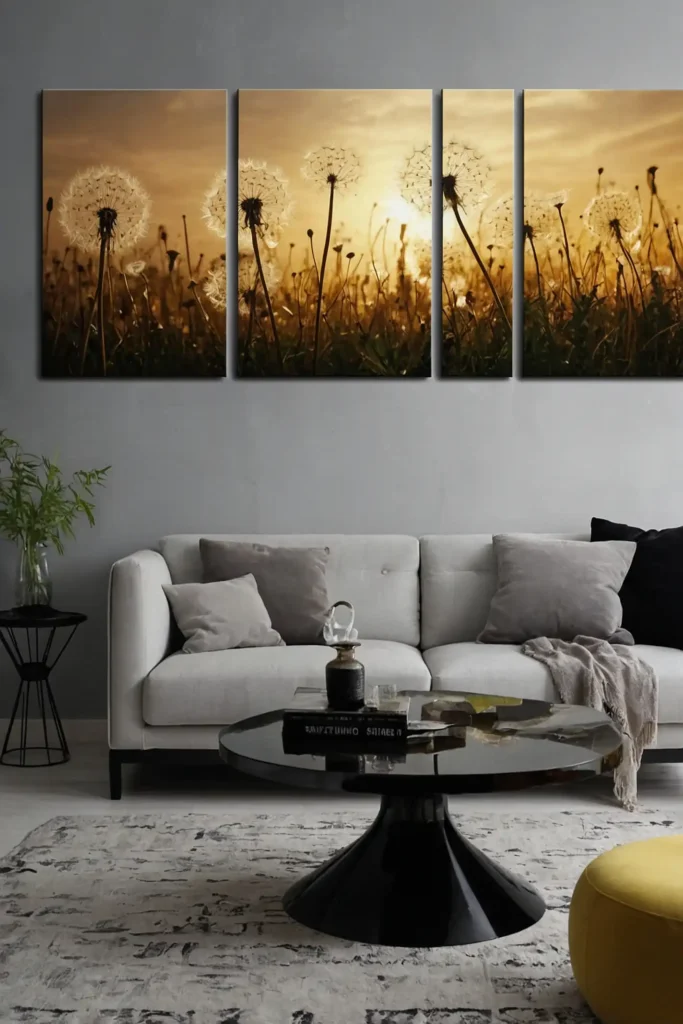
Create a colorful background—try sunset colors or a solid favorite shade.
Once dry, paint black dandelion stems and use a small brush to add the delicate seed heads.
Finish by adding small floating seeds with a fine brush.
The contrast between the detailed black silhouettes and colorful background creates striking botanical art.
16: Paint Splatter Abstract
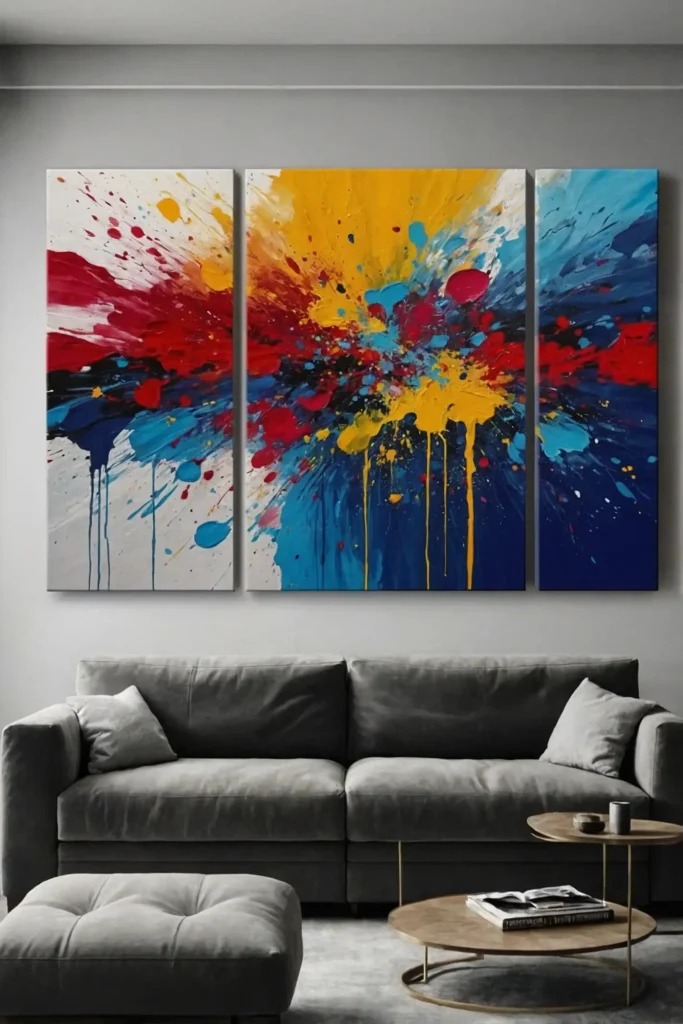
Channel your inner Jackson Pollock by loading brushes with different colored paints and flicking, dripping, and splattering them across a white canvas for a dynamic abstract piece.
This expressive technique requires zero precision but delivers high visual impact.
Try limiting your palette to three complementary colors for a more cohesive look.
17: Simple Heart Designs
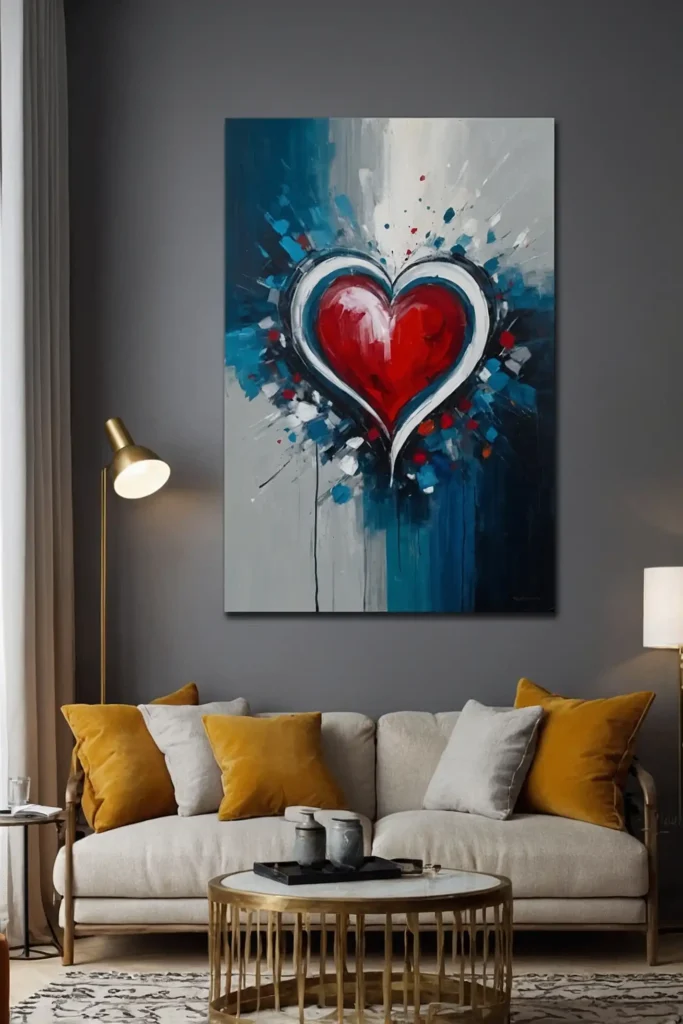
Create a background wash in soft colors, then add heart shapes in different sizes using a round brush.
Overlap some hearts and vary the colors for visual interest.
This straightforward design works for nurseries, gifts, or any space needing a touch of love.
The simple shape is achievable even for those with minimal drawing experience.
18: Negative Space Leaf Prints
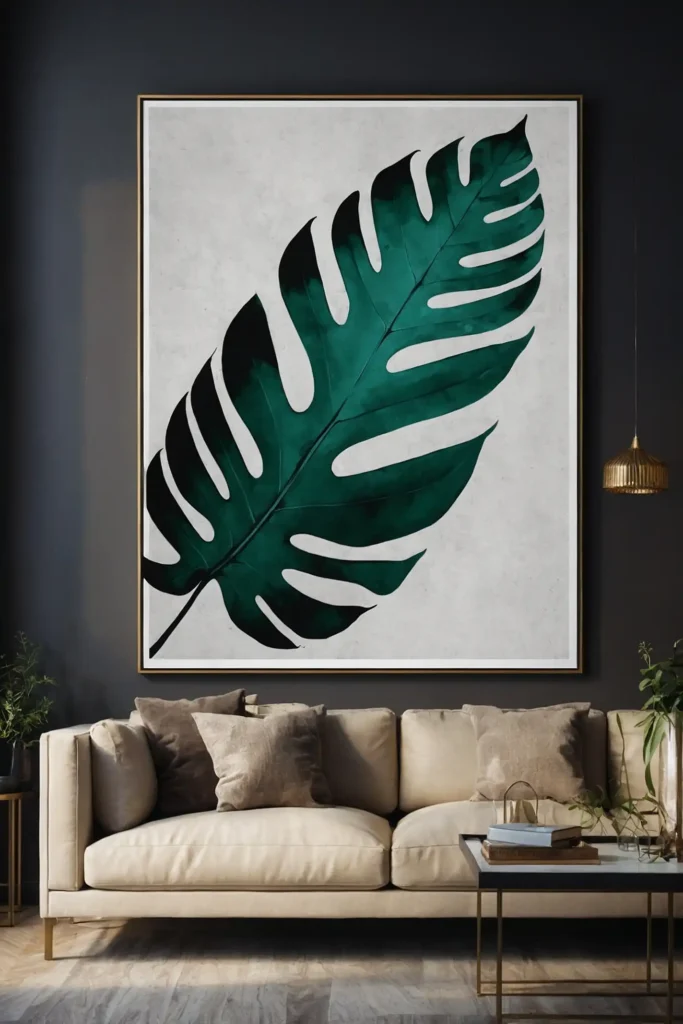
Collect interesting leaves, coat one side with paint, and press them onto your canvas to create natural imprints.
Remove the leaves to reveal their detailed impressions.
This nature-inspired technique captures intricate leaf structures without requiring drawing skills.
Use multiple colors or a gradient effect for added visual interest.
19: Abstract Rainbow Stripes
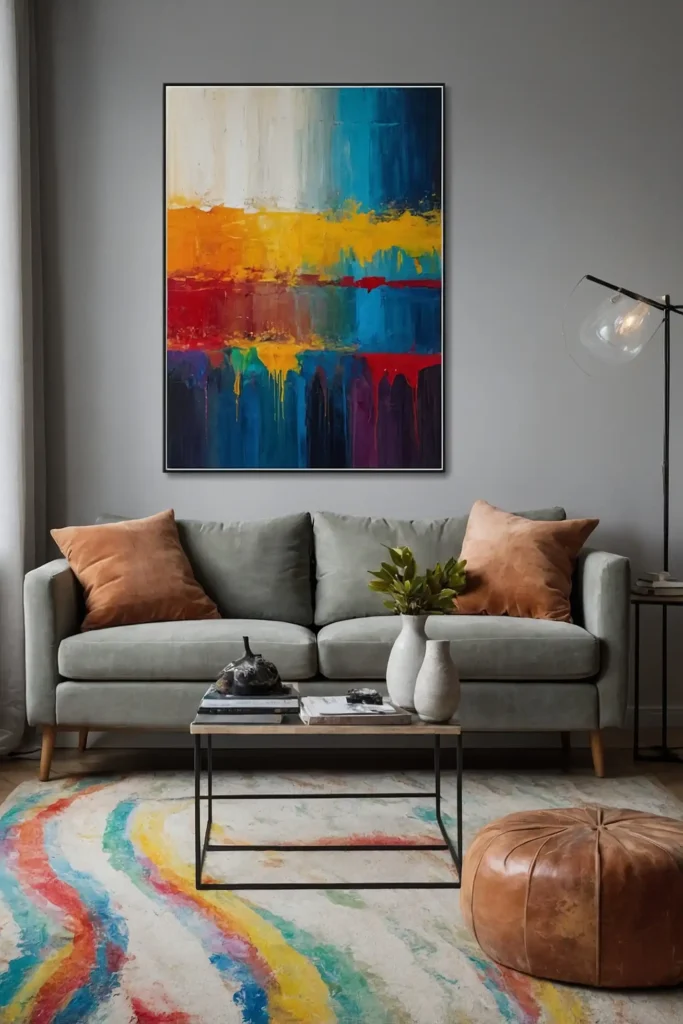
Create a statement piece by painting horizontal or vertical stripes in rainbow colors across your canvas.
Use painter’s tape for clean lines or go freehand for a more organic look.
This simple technique allows for endless personalization through color selection and stripe width.
The linear arrangement creates a modern, graphic design aesthetic.
20: Watercolor Wash Backgrounds
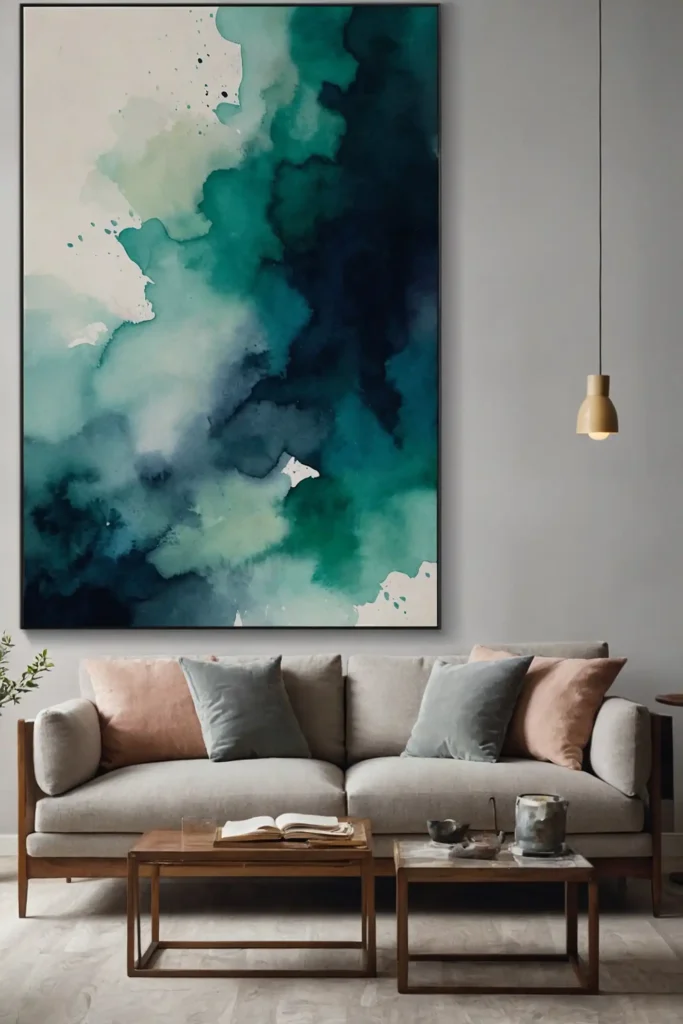
Create ethereal backgrounds by wetting your canvas first, then dropping watercolor paints and allowing them to bloom and blend naturally.
Add simple line details when dry.
This technique embraces the unpredictable nature of watercolors for beautiful, one-of-a-kind results.
The flowing colors create dream-like backgrounds perfect for minimalist art.
21: Textured Salt Technique
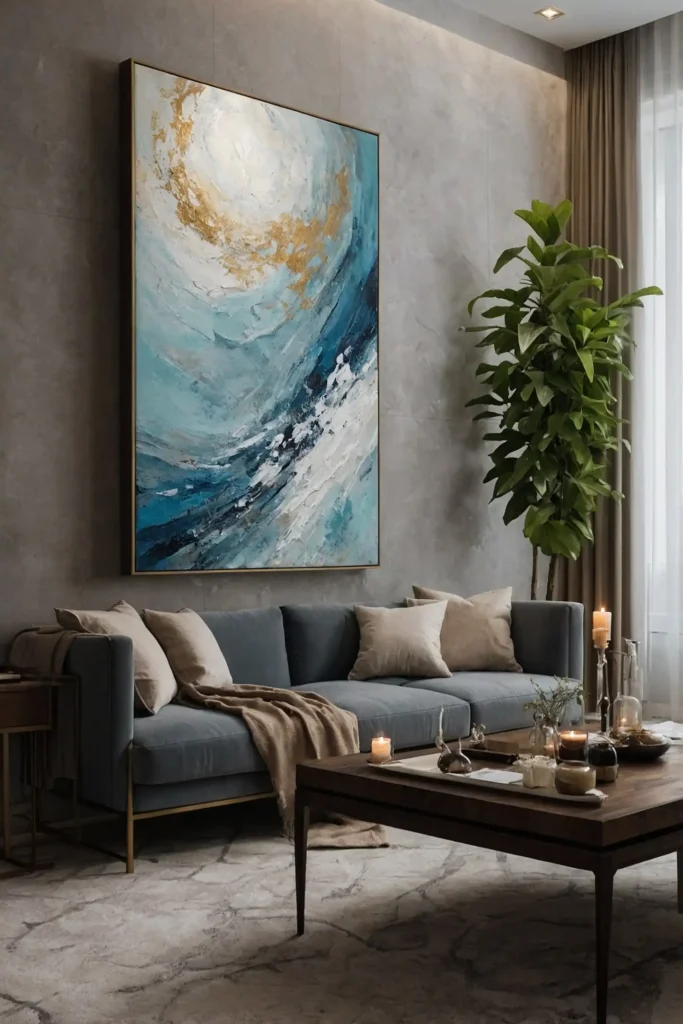
Apply wet watercolor paint to your canvas, then sprinkle salt over the surface.
As it dries, the salt creates a crystallized texture perfect for starry skies or textured landscapes.
Once completely dry, brush away the salt to reveal the magical pattern underneath.
This science-meets-art technique creates unique textures impossible to achieve with brushwork alone.
Conclusion
Armed with these beginner-friendly techniques, you’ll transform blank canvases into personalized art that brightens your home and builds your creative confidence.
Remember, the joy comes from the process—perfection is never the goal!


